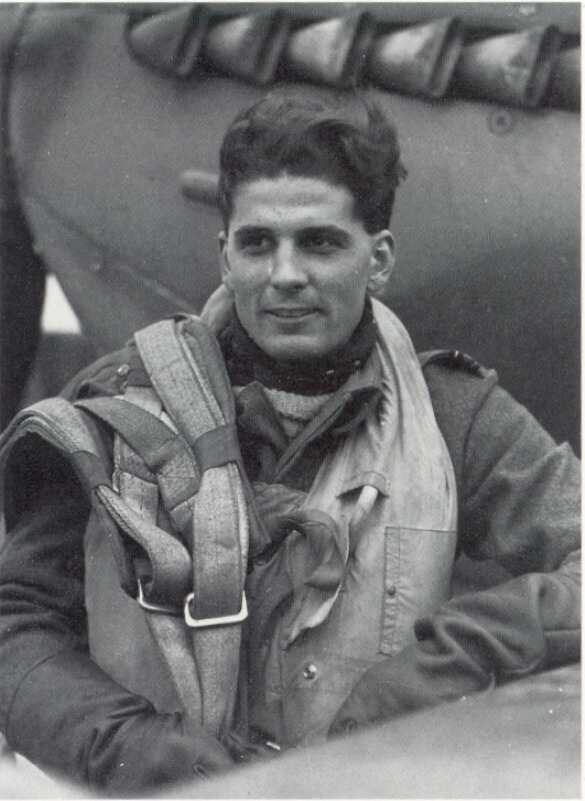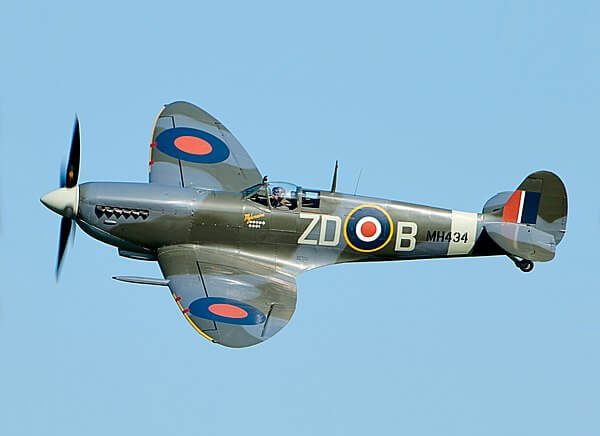
Flight Lieutenant Richard (Dick) Joseph Audet. [DND Photo PL 41719, Steve Sauve.]
Flight Lieutenant Richard (Dick) Joseph Audet did just that on Dec. 29, 1944, while flying over Osnabrück, Germany—he took down three Fw 190s and two Me 109s.
“Among the many successes chalked up during this period, F/L Audet’s…battle would go down in history as one of the greatest triumphs in air combat history,” as a HistoricWings.com article put it.
Born in 1922, Audet grew up on the rolling prairies of ranch near Lethbridge, Alta., the sixth child of Paul and Ediwisca Audet. A thoroughbred farm boy, he rode a horse to school nearly 30 kilometres from home. After graduating from Garbutt Business College in Lethbridge, he started work as a stenographer and bookkeeper at RCAF Station High River in 1941.
Audet enlisted with the RCAF in August and in late-October 1942 he received his wings and was shipped off to England. He was promoted to flying officer by the following spring and refined his prowess in a single-seat Supermarine Spitfire. In October 1944, Audet was assigned to 411 (Grizzly Bear) Squadron, what HistoricWings.com called “one of the highest scoring and most expert units” in the Second World War.
Its pilot attempted to bail out, though Audet reported that “his ’chute ripped to shreds.”
The Battle of the Bulge was consuming Allied efforts by that December, and the 2nd Tactical Air Force was tasked with controlling any threat from the Luftwaffe.
After 411 helped the Royal Air Force strafe and destroy nine locomotives, 39 rail cars and shoot down an Fw 190 on Dec. 29, the squadron was given a second mission of the day: engage in a fighter sweep over Osnabrück and the Rhine in central Germany.
Around 1:00 p.m., Audet’s Spitfire Mk.IXe and was confronted with a swarm of Luftwaffe fighters. And at approximately 200 metres away, Audet attacked his first target: an Me 109. It burst into flames, leaving a trail of “intense black smoke,” he reported.
His first kill down, Audet circled back and spotted an Fw 190. He shot at the plane, noting as he passed it that the pilot was “slumped over,” the engine and cockpit ablaze.
Within seconds, he spotted his next victim, another Me 109 in a slight dive, about 300 metres away. After a short blast, its pilot attempted to bail out, though Audet reported that “his ’chute ripped to shreds.”
Still, the Luftwaffe kept coming. Nearby, Audet spotted a colleague being pursued by an Fw 190. He joined the chase and opened fire at 250 metres, causing the enemy fighter to barrel roll and burn en route to the ground.
Audet’s last kill was another Fw 190. After spotting it, he dove to attempt a head-on attack. After taking shots at the plane, he wondered if he had hit it until it began to violently flutter, descending toward a fiery crash. With only 83 sorties and less than 109 flying hours, Audet had managed to take down five planes in just minutes.

A Spitfire IX, similar to the one Audet flew. [Wikimedia]
“Modest and unassuming, he was just one of the boys and a real credit to Canada and her RCAF,” said one of his fellow 411 crew. “He was a leader, respected and admired by all. Just one swell guy.”
Advertisement





















